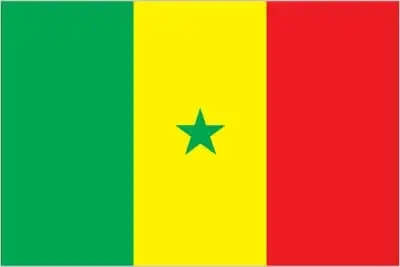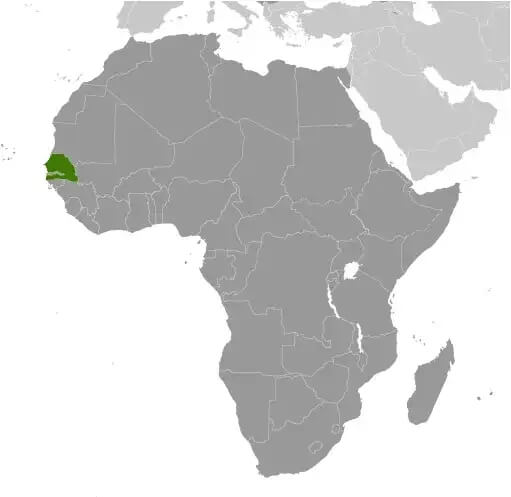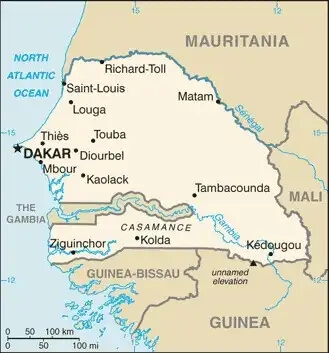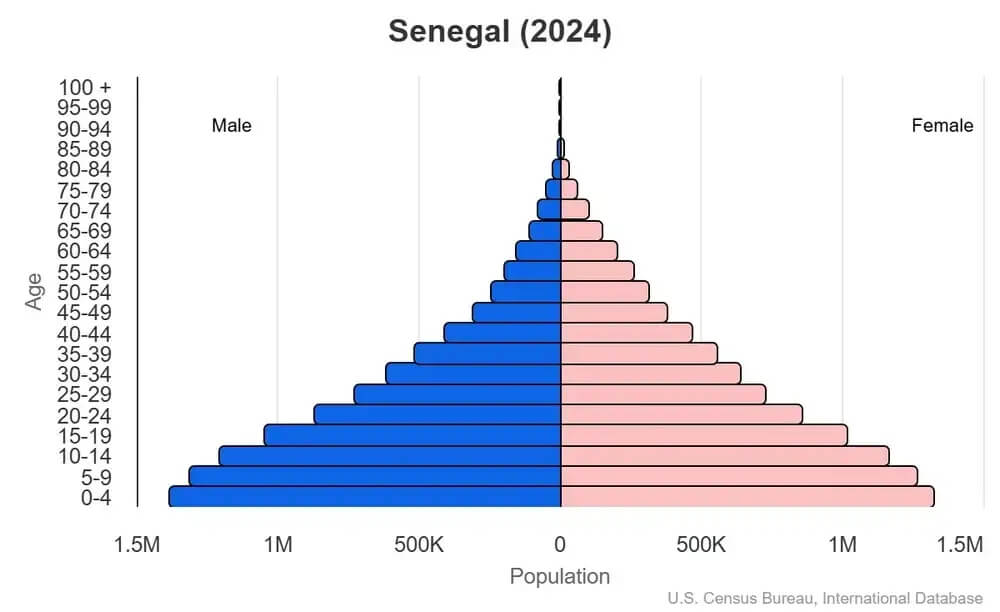World Book
Senegal
World Book Index
50


With a score of 50, the country is ranked 126th out of 158 countries in the World Book ranking. (more information)
Introduction
Background
The French began to expand onto the Senegalese mainland in the second half of the 19th century and made it a French colony. The French colonies of Senegal and French Sudan were merged in 1959 and granted independence in 1960 as the Mali Federation. The union broke up after only a few months. Senegal joined with The Gambia to form the nominal confederation of Senegambia in 1982. The envisaged integration of the two countries was never implemented, and the union was dissolved in 1989.
Geography
Area
total : 196,722 sq km
land: 192,530 sq km
water: 4,192 sq km
Climate
tropical; hot, humid; rainy season (May to November) has strong southeast winds; dry season (December to April) dominated by hot, dry, harmattan wind
Natural resources
fish, phosphates, iron ore
People and Society
Population
total: 18,847,519 (2024 est.)
Ethnic groups
Wolof 39.7%, Pulaar 27.5%, Sereer 16%, Mandinka 4.9%, Jola 4.2%, Soninke 2.4%, other 5.4% (includes Europeans and persons of Lebanese descent) (2019 est.)
Languages
French (official), Wolof, Pulaar, Jola, Mandinka, Serer, Soninke
Religions
Muslim 97.2% (most adhere to one of the four main Sufi brotherhoods), Christian 2.7% (mostly Roman Catholic) (2019 est.)
Population growth rate
2.46% (2024 est.)
Government
Government type
presidential republic
Capital
name: Dakar
Executive branch
chief of state: President Bassirou Diomaye FAYE (since 2 April 2024)
head of government: Prime Minister Ousmane SONKO (since 2 April 2024)
Diplomatic representation in the US
chief of mission: Ambassador Abdoul Wahab HAIDARA (since 24 July 2025)
Diplomatic representation from the US
chief of mission: Ambassador Michael RAYNOR (since 10 March 2022); note - also accredited to Guinea-Bissau
Economy
Economic overview
lower middle-income, services-driven West African economy; key mining, construction, agriculture, and fishing industries; tourism and exports hit hard by COVID-19; large informal economy; developing offshore oil and gas fields; systemic corruption
Real GDP (purchasing power parity)
$83.183 billion (2024 est.)
$77.82 billion (2023 est.)
$74.642 billion (2022 est.)
Real GDP per capita
$4,500 (2024 est.)
$4,300 (2023 est.)
$4,200 (2022 est.)
Exports
$7.001 billion (2023 est.)
$7.418 billion (2022 est.)
$6.78 billion (2021 est.)
Exports - partners
Mali 21%, India 12%, Switzerland 11%, China 5%, UAE 4% (2023)
Exports - commodities
gold, refined petroleum, phosphoric acid, fish, cement (2023)
Imports
$14.916 billion (2023 est.)
$14.698 billion (2022 est.)
$12.278 billion (2021 est.)
Imports - partners
China 19%, France 9%, Nigeria 7%, India 7%, Russia 5% (2023)
Imports - commodities
refined petroleum, crude petroleum, rice, garments, wheat (2023)
Human Development Index
The country's Human Development Index (HDI) is 0.530, ranking it 169th out of 193 countries tested. (more information)
World Happiness Report
The World Happiness Report ranked the country 108th out of 158 countries tested with a score of 4.893. (more information)



